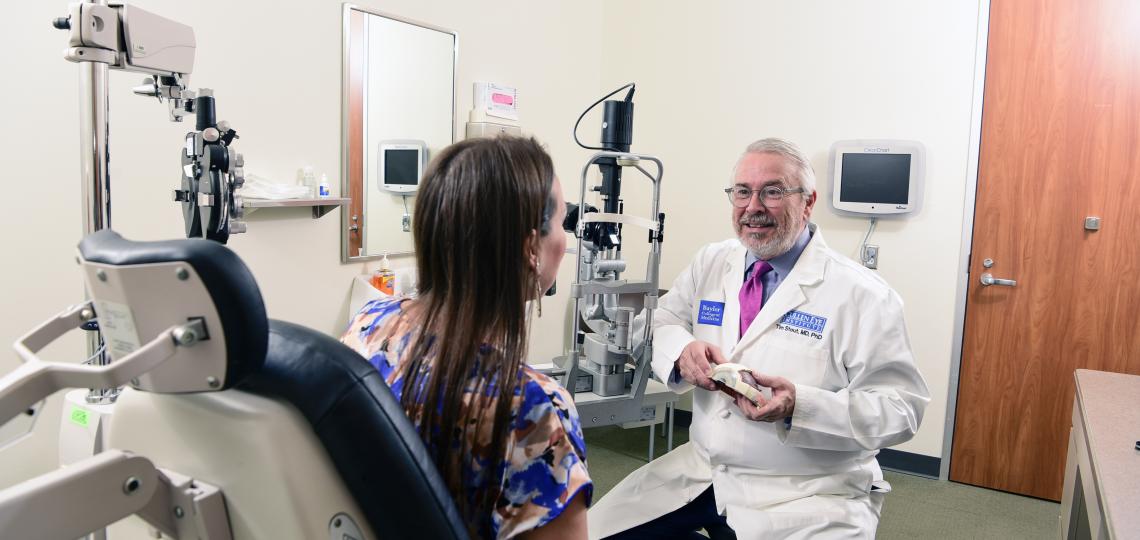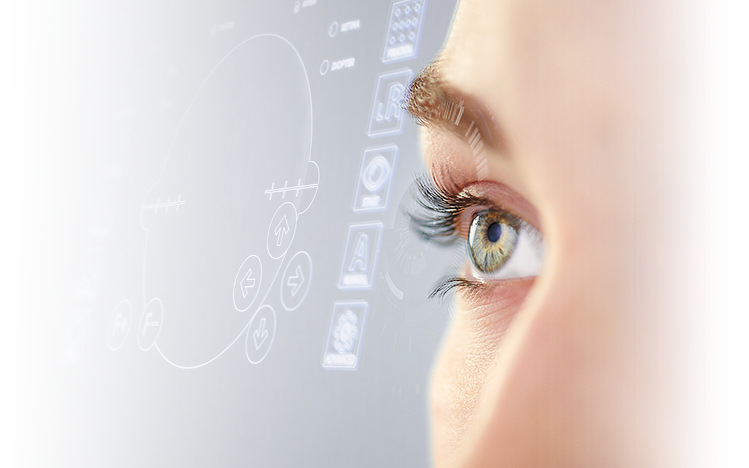Discovering the State-of-the-Art Technologies Made Use Of for Dealing With and identifying Eye Conditions
In the realm of ophthalmology, the advancement of technology has significantly improved the devices available for diagnosing and dealing with various eye conditions. From sophisticated imaging modern technologies that provide in-depth insights right into eye frameworks to robotic-assisted medical procedures that provide unequaled accuracy, the landscape of eye care is continuously developing.

Advanced Imaging Technologies
Advanced Imaging Technologies have reinvented the area of ophthalmology by providing precise and comprehensive visualization of the eye structures. This non-invasive strategy help in the very early detection and monitoring of different eye conditions such as macular degeneration, diabetic person retinopathy, and glaucoma.
In Addition, Fundus Photography is another vital device in ocular imaging. This strategy entails recording detailed pictures of the rear of the eye, including the retina and optic disc. Fundus Photography assists in documenting the progression of eye diseases, assessing treatment efficacy, and informing clients about their eye health and wellness.

Robotic-Assisted Surgery
Robotic-assisted operations have significantly advanced the capabilities of ophthalmic surgical treatment, ushering in a new era of precision and efficiency in treating various eye conditions. By integrating robot modern technology right into operations, eye doctors can achieve exceptional accuracy and control, leading to boosted individual outcomes.
One of the primary benefits of robotic-assisted surgery in ophthalmology is the boosted mastery and security it uses to specialists. The robotic arms can perform precise activities with a high level of accuracy, permitting fragile treatments with very little invasiveness. This degree of accuracy is especially useful in surgical treatments involving the retina, where also minor errors can have substantial ramifications for a client's vision.
Furthermore, robotic-assisted medical systems provide real-time imaging and feedback to the doctor, allowing them to make informed choices during the treatment. This innovation enhances the doctor's situational understanding and permits changes to be made without delay, ensuring optimum results for the person.
Expert System in Diagnostics
With the advancement of innovative technologies improving surgical precision in ocular procedures, the assimilation of Artificial Intelligence in diagnostics has actually become a crucial development changing the field of eye treatment. Expert System (AI) formulas are being increasingly used to analyze complex information from imaging technologies like optical comprehensibility tomography (OCT) and fundus digital photography to assist in the very early discovery and accurate diagnosis of numerous eye problems. These AI systems can efficiently determine patterns and abnormalities in pictures that may not be noticeable to the human eye, enabling quicker diagnosis and therapy preparation.
AI algorithms can also predict illness development, advise personalized treatment plans, and evaluate the efficiency of interventions. By improving the diagnostic process, AI not only enhances the efficiency of eye care professionals but also improves patient outcomes by enabling prompt treatments. As AI proceeds to breakthrough, its function in diagnostics is anticipated to broaden, providing new possibilities for very early intervention and customized treatment in the area of ophthalmology.
Genetics Treatment Advancements
In the realm of ophthalmic advancements, current strides in genetics therapy innovations have sparked substantial rate of interest among researchers and medical care experts alike. Gene treatment holds tremendous pledge in transforming the treatment of numerous eye conditions by targeting the underlying hereditary causes. By introducing hereditary material right into cells to make up for unusual genes or to give a missing genetics, genetics therapy supplies an individualized approach to dealing with acquired eye he has a good point problems such as retinitis pigmentosa, Leber congenital amaurosis, and others that were formerly considered untreatable.

As study in gene therapy remains to advancement, the capacity for customized therapies for a bigger variety of eye problems grows, providing new wish for people with genetic eye conditions.
Digital Truth Recovery
Digital fact rehab has become an advanced technique in enhancing the recuperation and rehabilitation processes for people with numerous visual impairments. hearing service near me. By mimicing real-world environments through immersive modern technology, online truth provides a special system for vision treatment and rehab. This cutting-edge technique makes it possible for people to participate in interactive exercises and activities created to improve aesthetic skill, depth understanding, eye coordination, and overall aesthetic functioning
One secret advantage of virtual reality rehab is its capacity to customize therapy programs based upon the certain requirements and capacities of each individual. Through real-time responses and monitoring, health care specialists can track development, readjust interventions, and offer individualized care to enhance outcomes. Additionally, digital reality innovation can produce a regulated and safe room for people to practice aesthetic jobs, get rid of obstacles, and construct confidence in a digital setting before transitioning to real-world circumstances.
Final Thought
In final thought, the developments in imaging modern technologies, robotic-assisted surgeries, fabricated knowledge diagnostics, genetics therapy technologies, and virtual my blog fact recovery have actually substantially enhanced the diagnosis and treatment of eye conditions. glaucoma service near me. These modern technologies have changed the area of ophthalmology, permitting more precise and effective treatments. As innovation remains to develop, the future of eye treatment looks encouraging with the possibility for even more ingenious services to improve patient end results
In the realm of ophthalmology, the advancement of technology has actually substantially boosted the tools available for identifying and dealing with different eye conditions. Fundus Digital photography assists in recording the progression of eye diseases, examining treatment effectiveness, and educating patients concerning their eye wellness.
Fabricated Intelligence (AI) formulas are being increasingly made use of to analyze complicated data from imaging technologies like optical coherence tomography (OCT) and fundus photography to help in the very early detection and precise diagnosis of various eye problems.In final thought, the advancements in imaging modern technologies, robotic-assisted surgical treatments, fabricated knowledge diagnostics, genetics therapy advancements, and online fact rehab have actually considerably enhanced the diagnosis and therapy of eye conditions. As modern technology continues to progress, the future of eye care looks appealing with the possibility for even more cutting-edge remedies to boost individual outcomes.